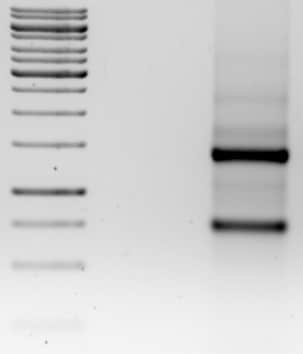Commercial kits for isolation of large quantities of plasmid DNA generally rely on standard alkaline lysis followed by an affinity chromatography column-based method to purify DNA.
Compared to traditional cesium chloride banding or PEG precipitation of plasmid DNA they are a breeze, and have the added benefit of avoiding use of toxic or hazardous chemicals such as phenol.
But even though they are good – it always pays to look for ways to save some time. So we have added a simple, inexpensive step to save approximately 30-45 minutes of prep time, using coffee filters…
Yes, using coffee filters and funnels purchased from any grocery store, the precipitated genomic DNA, protein and cell debris is filtered out prior to applying the plasmid-containing supernatant onto the column.
This step circumvents the 30-45 minutes of centrifuging typically used to pellet the debris. Here’s the procedure using Qiagen-based preps as an example…
1) Pellet the overnight culture as described in the protocol provided by the kit.
2) Follow resuspension, lysis and precipitation/neutralization steps as described by the manufacturer (for Qiagen kits, this would be steps including solutions P1, P2 and P3).
3) During incubation with the final solution (P3) set up the column.
a. Place column in a vesicle to collect the flowthrough. We typically use glass flasks or a rack inside a Tupperware container for multiple samples.
b. Equilibrate the column as described in the kit instructions.
c. Place an appropriately sized funnel into the top of the column.
d. Take 1 coffee filter and fold in half and then in quarters.
e. Open up the coffee filter to make a filter cone (see https://www.ehow.com/how_5124822_fold-filter-paper.html for instructions on how to make a filter cone)
f. Place the filter cone into the funnel
4) Pour out the solution and debris obtained from step (2) into the filter cone. Pour slowly at first to allow the filter paper to become wet, then pour everything out. Leave centrifuge bottle upside down in the funnel to allow all liquid to drain out.
a. Alternatively, the filter cone, funnel and column can be set up prior to equilibrating the column. The equilibration solution can then be added to the filter paper and allowed to drain through to the column.
5) After the solution has drained through the filter paper and onto the column, use clean, gloved hands to squeeze adsorbed liquid out of the filter paper and onto the column. Do not allow debris to be squeezed out of the filter.
6) Once the solution is on the column, follow the kit instructions to finish the prep.
What are your tips for speeding up plasmid preps?






